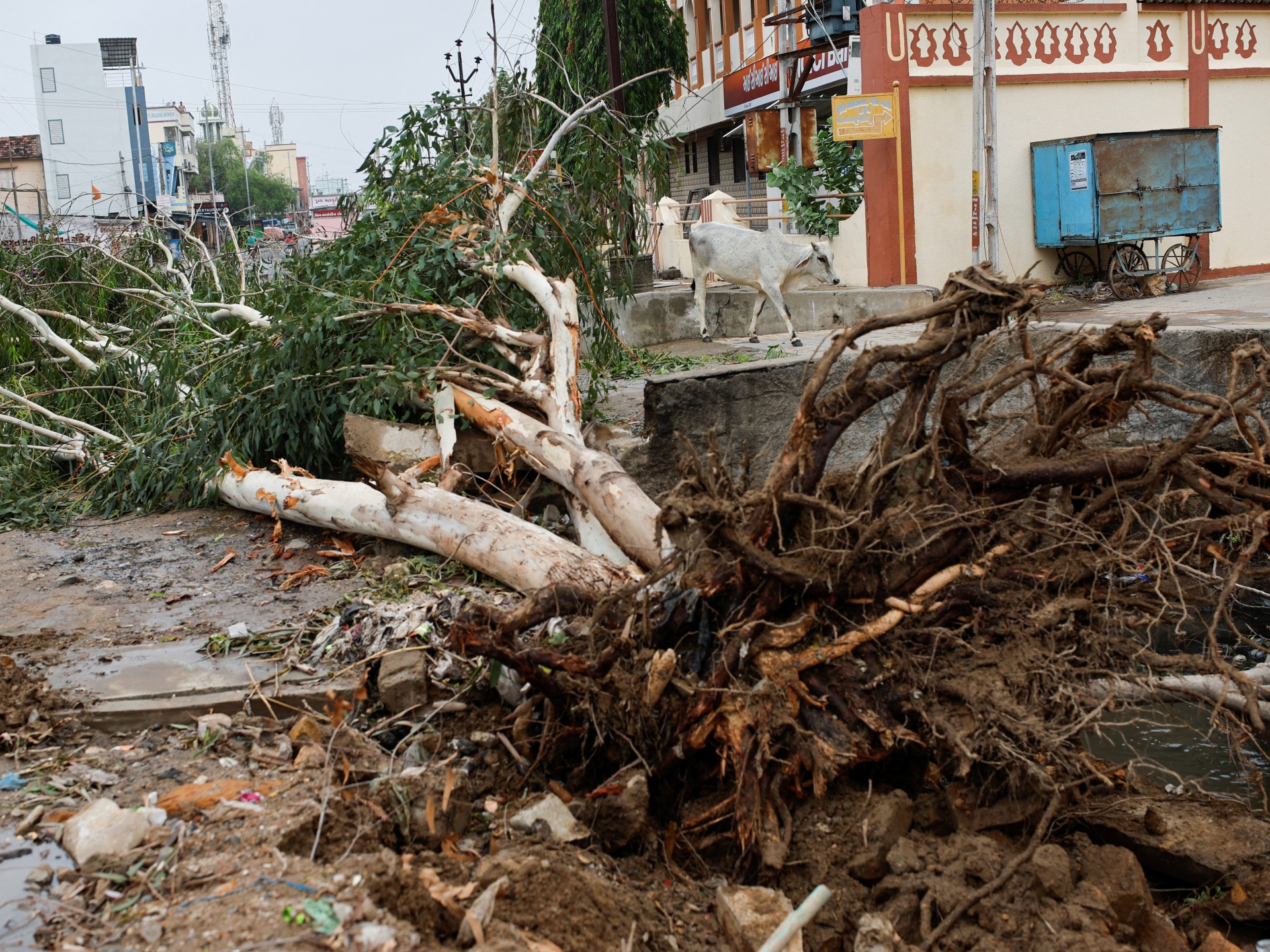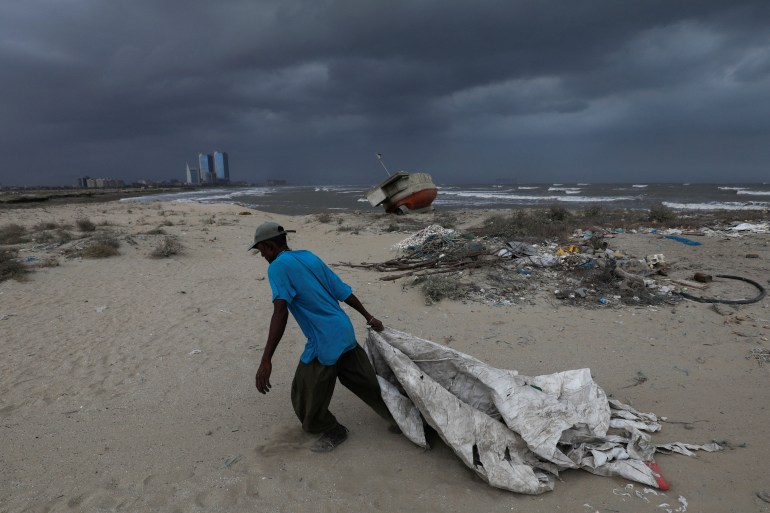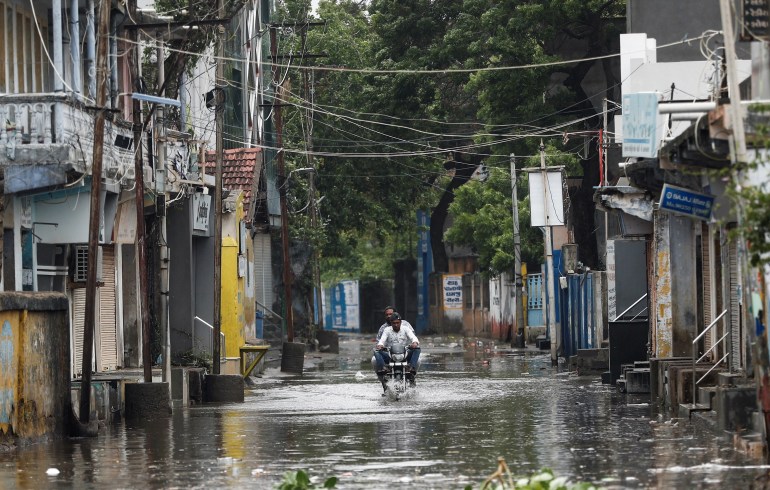
Hours after landfall in India’s Gujarat, Cyclone Biparajay’s wind speed has dropped to an average of 78 kilometers per hour (48 mph), officials in the Indian state said.
Heavy rain, strong winds and high tides lashed India’s Gujarat coast and neighboring Pakistan on Thursday, and the two countries evacuated more than 180,000 people to safety before the cyclone made landfall.
“According to the India Meteorological Department (IMD) and local data collectors, the cyclone hit Gujarat at 10 pm. [17:30 GMT] With a high wind speed of 108kph [67mph] But it is now running at an average speed of 78 kmph [48mph] Towards Buch district near the Pakistan border,” Gujarat relief commissioner Alok Pandey told reporters.
Biparjoy, which means “disaster” or “disaster” in Bengali, was centered in the Arabian Sea about 30 kilometers (19 miles) off the port of Jakhau in the western Indian state near the border with Pakistan, weather officials said.

Classified as a Category One storm, the least intense on a scale of one to five, Biparajay was expected to flatten makeshift thatched houses in its path and damage standing crops, crops and public infrastructure.
Before landfall, Biparjoy was located about 280 kilometers (174 miles) from Jakhau port in the western Indian state of Gujarat while packing maximum sustained winds of up to 145kph (90mph).
The Met Office has warned of disruption to the railway network. Tidal waves in the Arabian Sea could rise to two to three meters (seven to 10 feet), inundating low-lying coastal areas, the IMD warned.
More than 100,000 people have been evacuated from eight coastal districts of Gujarat and shifted to shelters, the state government said.
In Pakistan, where authorities say evacuations are complete, about 82,000 people have been evacuated from high-risk coastal areas.
Temporary relief quarters were set up in school auditoriums and other government buildings to shelter the displaced in both countries.
Power outage
Wind speeds picked up around Jakhau as the storm approached land, said Amit Arora, a revenue official in Kutch (Kutch) region, where more than 50,000 people have been evacuated.
Strong winds have disrupted power supply across Gujarat’s Kutch district, said Amit Arora, a top district official.
Indian television footage showed high waves crashing ashore in many coastal areas of Gujarat, as winds bent tall trees and displaced some structures.
In the coastal town of Mandvi, a witness told Reuters that strong winds uprooted trees, while other districts in the state also fell and received moderate rain.

Ships and boats have been evacuated from parts of Pakistan’s coast and hospitals have been put on high alert for the cyclone.
Khair Muhammad, a 46-year-old fisherman, has been staying for four days at a relief camp set up by the Sindh government in Golarchi, a town 170 kilometers (105 miles) north of Keti port.
“We have been given shelter in a small school that can accommodate 100 people. Life here is quite difficult,” Muhammad, who is there with his wife and eight children, told Al Jazeera.
“The government has told us that we cannot return to our village before June 18, so all day, we sit here, waiting and hoping that the cyclone does not destroy our boats,” he said.
Karachi, an economic hub with a population of about 20 million people, faces no immediate threat, but emergency measures are being taken to protect against expected winds and rain, Pakistan’s Climate Change Minister Sherry Rehman said.
“There is no need to panic. Such storms are always unexpected. But rest assured that we have all arrangements in place,” Rehman said.
A 2021 study found that the frequency, duration and intensity of cyclones in the Arabian Sea increased significantly between 1982 and 2019.
Source link




